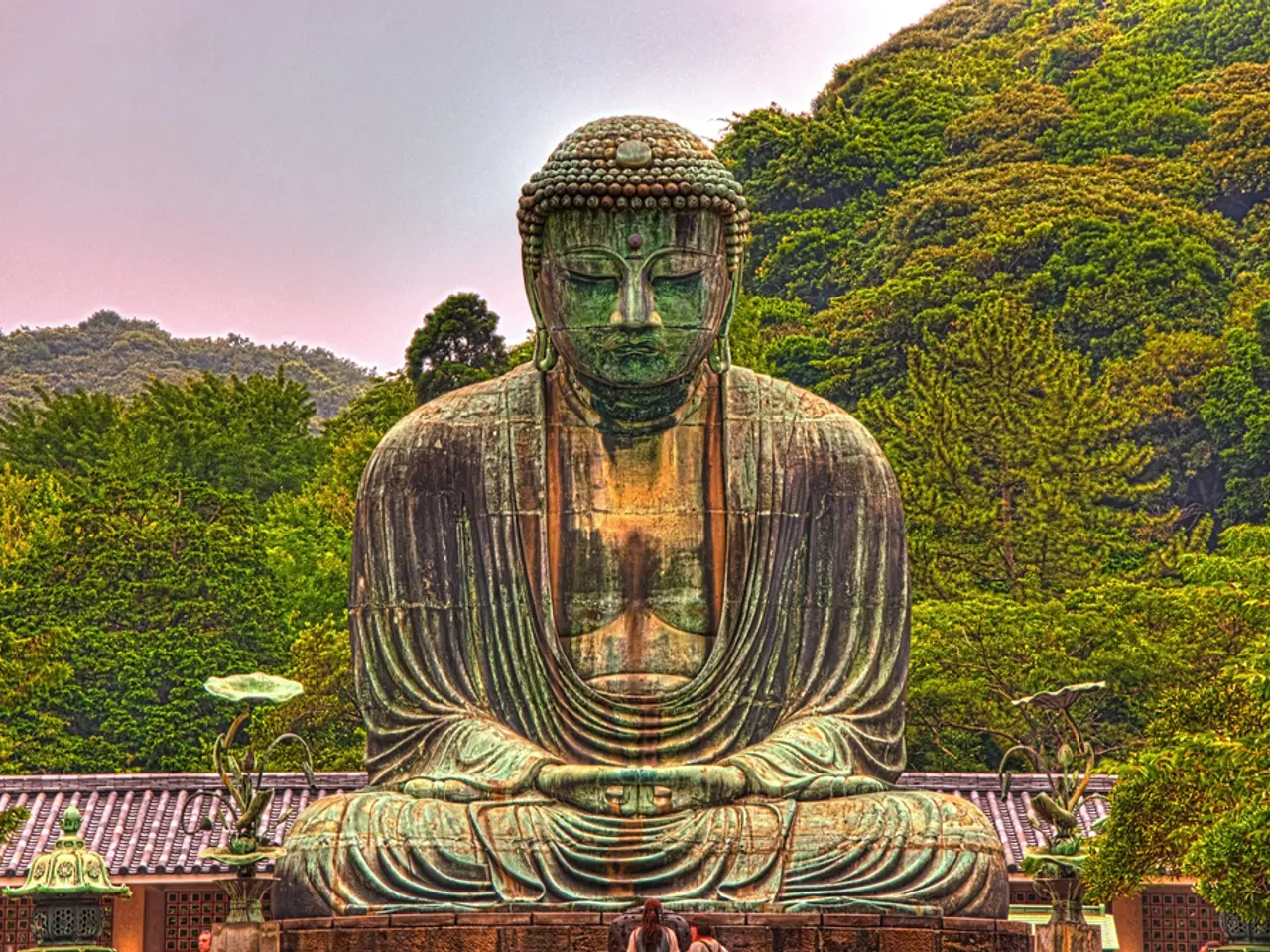Exploring the Mystical Energy Centers: Understanding Chakras, Their Origins, and Impact on One's Health
The Sanskrit word "chakra," which translates to "wheel," is at the heart of a spiritual concept that has been adapted and embraced by various cultures over the centuries. This article delves into the history, evolution, and contemporary understanding of the chakras, particularly the seven-chakra system that has become popular in the West.
Origins of Chakras
The concept of chakras can be traced back to ancient Vedic tradition in India, around 1500 BCE. In this context, "chakra" refers to energy centers or vortexes linked to physical, emotional, and spiritual well-being [1]. Classical Indian texts and yogic systems describe these chakras variably; however, the popular seven-chakra model is one among various traditional views [1].
The Western Chakra System
The Western chakra system, as commonly known today, has its roots in ancient Indian spiritual traditions but was significantly developed and adapted in the West primarily from the late 19th century onward, with major elaboration in the 20th century [2]. This system was further transmitted and popularized in the West by the Theosophical Society in the late 19th and early 20th centuries. Theosophists like Charles Leadbeater and Annie Besant combined Eastern philosophy with Western esoteric ideas, emphasizing a structured chakra system that aligned with Western metaphysical interests [2].
Later, mid-20th century movements such as the New Age and Western yoga schools expanded the idea of chakras into broader spiritual and holistic health frameworks, often linking chakras to psychological states and therapeutic practices. Scientific explorations, such as Candice Pert's research on neuropeptides, have been used to draw analogies between chakras and nervous system structures, although chakras remain metaphysical concepts rather than measurable physiological entities [3].
Modern Interpretations and Practices
In Hinduism and Buddhism, chakras are thought of as energy centers in the body. The primary chakras may correspond to the central nervous system and relate to different nerve plexuses [4]. Many therapies that target chakras can be relaxing, such as yoga, meditation, Reiki, and other practices [5].
Chakras have become associated with different metals, astrological signs, foods or herbs, crystals or minerals, tarot cards, and have influenced various New Age alternative health practices, such as crystal healing and homeopathy [6].
Scientific Perspectives
Some scientists have argued that chakras correspond to physical body parts, particularly in the nervous system [7]. However, it's important to note that while there are analogies drawn between chakras and physiological structures, chakras remain metaphysical concepts and have not been scientifically validated as measurable entities.
Health Benefits and Limitations
Many studies have shown that meditation, including chakra-based meditation, has mental and physical health benefits such as reducing stress, easing anxiety and depression, and lowering blood pressure [8]. However, the placebo effect may play a role in the benefits people experience from chakra-based therapies [9].
It's crucial to note that the 2021 study assessing the chakras of people undergoing treatment at an acupuncture clinic found that 89% had no energy on their chakra meridians, but it did not test whether chakra-based therapies help prevent or treat COVID-19 [10]. Moreover, chakra-based therapies should be considered as complementary to, rather than a substitute for, medical treatment.
In a 2020 study, 223 participants enrolled in various chakra-based meditation programs reported generalized reductions in anxiety and improvements in their perception of their health [11].
In conclusion, the Western chakra system evolved by interpreting and adapting ancient Indian Vedic and yogic concepts of chakras into a fixed seven-center system aligned with the spine [1][3]. Its systematic presentation was influenced by late medieval Indian treatises and gained Western traction through Theosophy and later New Age spirituality [3]. It incorporates both physical and metaphysical components, blending spiritual, psychological, and energetic ideas into a concept familiar to Western alternative and holistic health practices. This development represents a cross-cultural reinterpretation rather than a direct continuation of a single ancient chakra doctrine.
The Western chakra system, rooted in ancient Indian spiritual traditions, has been significantly developed and adapted in the West, often linking chakras to contemporary health-and-wellness practices such as yoga and meditation for stress reduction and mental health improvement [8,11]. Modern scientific explorations, like Candice Pert's research on neuropeptides, have attempted to draw analogies between chakras and nervous system structures [3].
Chakras, while incorporated into science discourse, remain metaphysical concepts rather than physiological entities, which is a crucial consideration in the broader conversation about their health benefits and limitations [7]. For instance, while studies show mental and physical health benefits of chakra-based meditation practices [8,11], it's important to acknowledge the potential role of the placebo effect and the need for complementary, rather than substitute, medical treatment [9,10].




